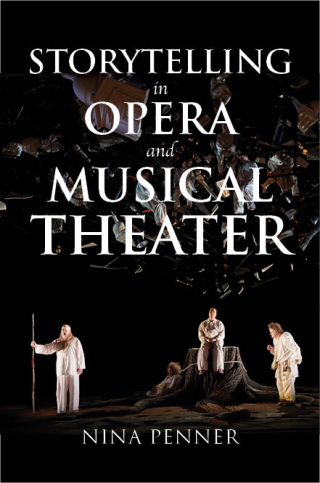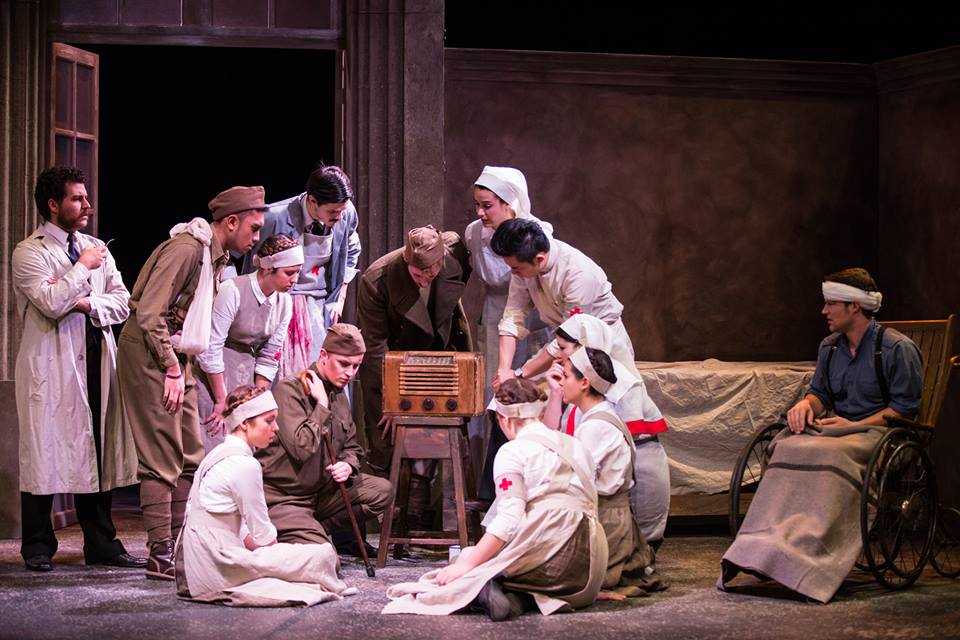Nina Penner, an Assistant Professor of Music at Brock University, is set to release her first book in October 2020. Storytelling in Opera and Musical Theater is the first systematic exploration of how sung forms of drama tell stories. Within the book, Nina explores how music within these art forms can orient the audience to characters’ points of view as well as introduce them to characters’ inner thoughts and feelings. Furthermore, she focuses on the contribution of performers and how their choices can affect not only who is telling the story but what story is being told. Nina also considers practical problems singers and directors confront of a daily basis, such as what to do about Wagner’s Jewish caricatures and the racism of Orientalist operas. Finally, she reflects on how both older and newer works can remain meaningful to contemporary audiences and have the power to attract new, more diverse audiences to opera and musical theatre. Learn more about Storytelling in Opera and Musical Theater here.
In celebration of her new book, we asked Nina a few questions over email:

My first exposure was through community musical theatre productions in St. Catharines. During my undergraduate studies at the University of Toronto, I played clarinet in the pit orchestra of several operas and musicals, which was tremendous fun. My knowledge of opera history deepened through my history classes at U of T and during my doctoral studies at McGill. Initially, my interest as a scholar lay exclusively in opera. While I was at McGill, my supervisor, Lloyd Whitesell, was writing Wonderful Design: Glamour in the Hollywood Film Musical. Through his “glam” seminar and a research assistantship, I returned to my first love, musical theatre. Professor Whitesell and I are somewhat atypical in our interest in both opera and musical theatre. In musicology, these art forms are typically studied separately. But in terms of how operas and musicals tell stories, these art forms are broadly comparable. I realized that the book’s argument would be stronger, and its audience broader, if I drew from examples from both “popular” and “high art” traditions.
A lot of existing research of opera and musical theatre focus primarily on the score and libretto. What prompted you to include the contribution of the performer in your book?
My love of these art forms began as a performer. I have never played a show in which we performed the work, as written, from beginning to end. Sometimes the entire first rehearsal was spent going through the work, number by number, marking cuts, insertions, and reordered numbers. And that’s just the score, which is treated with much more care than the libretto or the stage directions. Today, a production of The Marriage of Figaro is about as likely to take place on the moon as in Seville. By the time I was in graduate school, a few opera scholars were writing about these sorts of directorial interventions. These discussions focused on performances in Europe, however. I wanted to showcase the innovative work being done in Canada. In fact, two of my case studies are productions by Opera McGill: Tom Diamond’s The Turn of the Screw (2011) and Aria Umezawa’s Pygmalion (2014).

Your book is not only geared towards musicologists but also singers, directors, and arts managers. What do you hope readers will take away from your book?
I wrote this book with several different types of readers in mind, each of which, I hope, will take different things away from it. One of the main arguments I make in the performance-focused chapters is that not all opera performances are performances of pre-existing works (e.g., by Mozart and Da Ponte). Some performances, such as Against the Grain Theatre’s A Little Too Cozy (a “transladaptation” of Così fan tutte) are better regarded as works in their own right. Against the Grain knows this and markets their shows accordingly. No one is shocked to find out that the libretto is in English and contains references to Moosejaw or that Alfonso is the host of a reality TV dating show (see YouTube link below). Bigger, more traditional houses, by contrast, tend to market a production of Don Giovanni in which all of the characters are part of the same mafia-like family (I’m not making this up) as they would a performance involving breeches and bodices. Audience members paying to see Mozart and Da Ponte’s work are right to question whether they got what they paid for. The answer is not to demand that performers be more faithful to Mozart and Da Ponte (the aforementioned mafia Don Giovanni might have made more sense if the director revised the libretto along with the characters’ relationships), but, rather, to be honest about what audiences can expect: a performance of Mozart’s score and Da Ponte’s libretto, a modern retelling, or a new work only loosely based on Don Giovanni.
(A promotional video for Against the Grain Theatre’s production of A Little Two Cozy.)
Building and maintaining audiences is always top of mind within the arts. Could you briefly discuss a few ideas you delve into on this topic?
I highlight the work of companies, such as Against the Grain Theatre in Toronto and Deaf West Theatre in LA, who have successfully attracted younger, more diverse audiences to opera and musical theatre, and attempt to isolate some of the key ingredients in their success. Accessibility or relevance, I argue, is not primarily a matter of updating the work’s setting, but, rather, of providing both experienced and newbie audience members with a means by which to understand and appreciate both the performance as well as any pre-existing works being performed. Sometimes this goal is best met by placing the work being performed in context and highlighting the historical influences on its creation. In Tom Diamond’s Turn of the Screw for Opera McGill, for example, he drew attention to the influence of psychoanalysis on the story by framing the action as a dramatization of the Governess’s sessions of the “talking cure.” In other cases, accessibility may be best pursued by taking the work out of context and showing the continued relevance of its themes for contemporary society. Peter Sellars is one of the most famous proponents of this approach in North America.
(Rehearsal footage of Deaf West’s Broadway Spring Awakening)
Another issue to contend with is the racism and sexism of many of the mainstays of the opera and musical theatre canons. The most common approach is simply to excise the portions causing the most offense, but this is not always possible (e.g., the anti-Semitism of Beckmesser’s characterization in Die Meistersinger pervades much of the score). Even if it is possible, removing the offensive content gives a false impression that there is nothing objectionable about the work. Alternatively, one could retain the offensive content but present it in a critical light and offer opportunities for performers and audience members to discuss it (e.g., in the program, pre-concert talks, and other events surrounding the performance). We should also consider the frequency with which we’re programming particularly egregious examples of Orientalism and, instead, consider freshening up the repertory with new works. Instead of staging a production of La traviata in which Violetta contracts COVID-19, what about commissioning a new work that can explore life during the pandemic more effectively?
In a recent Indiana University Press blog post, you wrote that opera has proven to be an adaptable art form. How do you expect the industry will evolve through and after this current pandemic?
It’s a difficult time for opera companies, and indeed, for all the performing arts. Currently, the main approaches I’ve seen include “watch parties” of previously recorded shows (e.g., the Canadian Opera Company is streaming Rufus Wainwright’s Hadrian on August 10) and “virtual salons” (e.g., Against the Grain Theatre’s “Quarantunes”). New technologies are affording new opportunities for audience participation. For example, the COC has organized a “virtual choir” performance of Verdi’s “Anvil Chorus” from Il trovatore, involving over 200 people from 22 countries.
(The COC’s Virtual Choir performing Verdi’s Anvil Chorus)
Given how the virus is transmitted, it is difficult to imagine that opera, as it has traditionally been understood, returning any time soon. The directors I’m in contact with are focusing on monodramas (e.g., Poulenc’s La voix humaine) and other small-scale works that can be recorded safely, without an audience, and uploaded for online streaming. I hope to see new works being commissioned that address current concerns, such as social isolation, loss of livelihood, as well as the inequalities the pandemic has exposed, particularly with respect to race and gender. I hope to see opera and musical theatre companies going beyond statements about diversity and inclusion and actually engaging more diverse talent (composers, librettists, performers, etc.) and putting people of colour in leadership positions.


